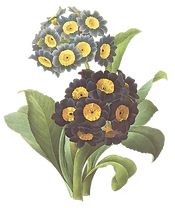Tips for Winter Pruning (or howintheworlddoIstartpruning)
- Cynthia Thomas
- Jan 3, 2017
- 3 min read

When? Where? How? Without formal training, pruning can be one of the most intimidating garden tasks. Many of us avoid it all together, but over time that results in less and less productivity from your roses, bushes and vines, or being overgrown altogether.
Anything that you want to bear fruit or flower, in particular, needs pruning. So here are a couple general practices that can help bolster your confidence to get out there and snip:
When: While different plants may have specific recommended months to prune, the best time to prune is “when you can,” according to Elizabeth Doyle, owner of Yankee Clippers based out of Maryland. She said if you wait for the right time, you may keep putting it off and never get around to doing it. The winter months, in general, are suitable for most trees and shrubs because the sap and “life blood” of the plant is dormant.
Where: Most people sheer the outside of the bush. Though it is important to manage the perimeter shape, it is vital to get inside the bush to create space for air and light to circulate and keep the plant healthy. Don’t be afraid to cut, it’s very hard to kill a plant that has an established root system. (I have, however, cut too much old growth off a native clematis vine and it didn’t come back. I’ve also uprooted poison ivy only to see it come back time and again. Go figure.)
How: Cut in the direction you want the growth. The spot from which you prune will be the point of growth next spring.
“A well-pruned shrub will outlast us,” Elizabeth told our garden club group. She said she got interested in pruning after leaving New York City and moving to Maryland where she “tortured” the plants around her new home. After learning pruning techniques, she enjoyed it so much she formed a business in 1995 that currently employs a couple dozen men and women who work five hours a day, five days a week. The company focuses mainly on bushes and shrubs.
Here is the Yankee Clipper approach to ‘natural’ pruning in 3 principles:
1. Identify your sight lines (step back to the curb or other obvious places that you will view your home from – sometimes even from an indoor window, depending on what views are most important to your final shape).
2. Set your objective (she explained her preference for natural pruning, being careful to avoid a blunt cut that needs constant shaping).
3. Focus on structure (after removing dead wood – realize that where you cut teaches the shrub where to grow. Avoid cuts that will lead to inward growing and avoid cutting at right angles).
Elizabeth also recommends getting sharp, sturdy tools. She looks for handsaws that have replacement blades for sale (Bahco being the sharpest) and uses loppers for big cuts. She said the Yankee Clippers like to use extension, telescoping and ratcheting pruners. When asked if a ‘chain saw’ can be used for pruning larger shrubs like American Holly and Crape Myrtle, she somewhat hesitantly agreed it could be done “at your own risk,” but warned against crape murder.
Sometimes pruning does feel like death. In fact, from a spiritual perspective, Jesus said that God is the vinedresser (John 15), Jesus the vine, and we are the branches. Like any attentive gardener, it states the God is pleased by much fruit. This passage also points out the purpose of pruning: so that the branch will bear MORE fruit. (The discarded branches are what we would call deadwood; those no longer abiding in the vine are thrown out.)
Take heart, my fellow branch, that the pruning process will be on-going. Do you remember one of Elizabeth’s principles: where you cut teaches the plant where to grow?
Sometimes we may feel that we are doing a good job serving or teaching or helping the Lord in some area and the opportunity disappears. We might question if we’ve somehow failed or messed up and that is why something was taken from us. I can’t say definitively that you are being pruned, but consider this technique. The vinedresser isn’t trying to deprive the branch, He’s training it where to grow stronger and be more productive.
Wait confidently, there will be another season of growth!























Comments